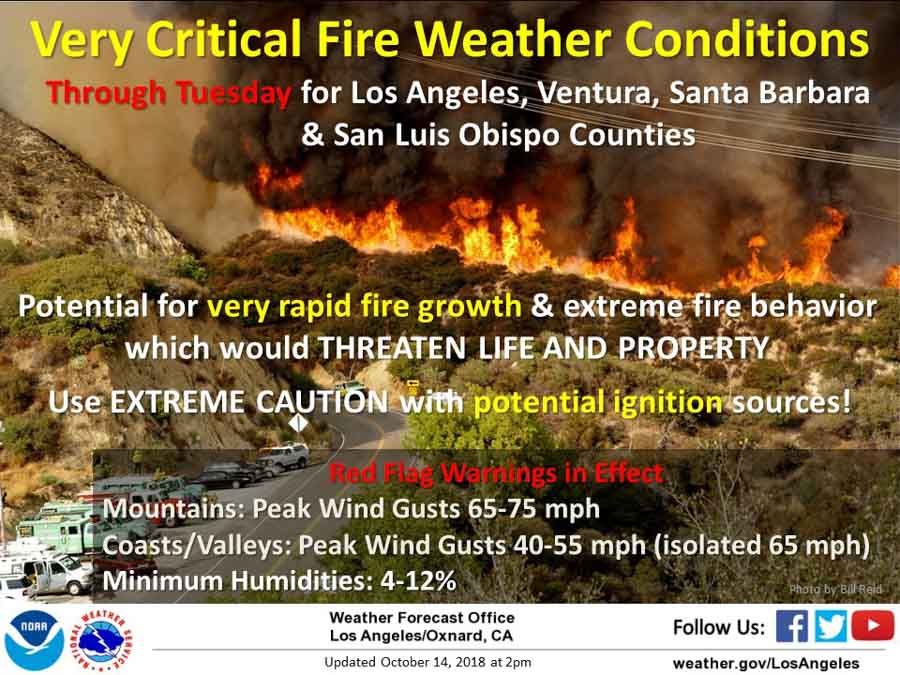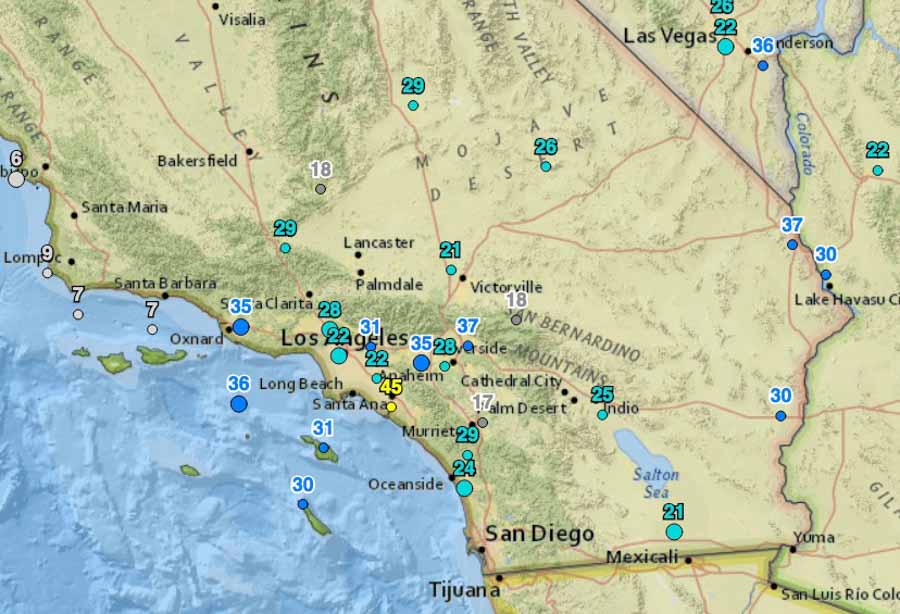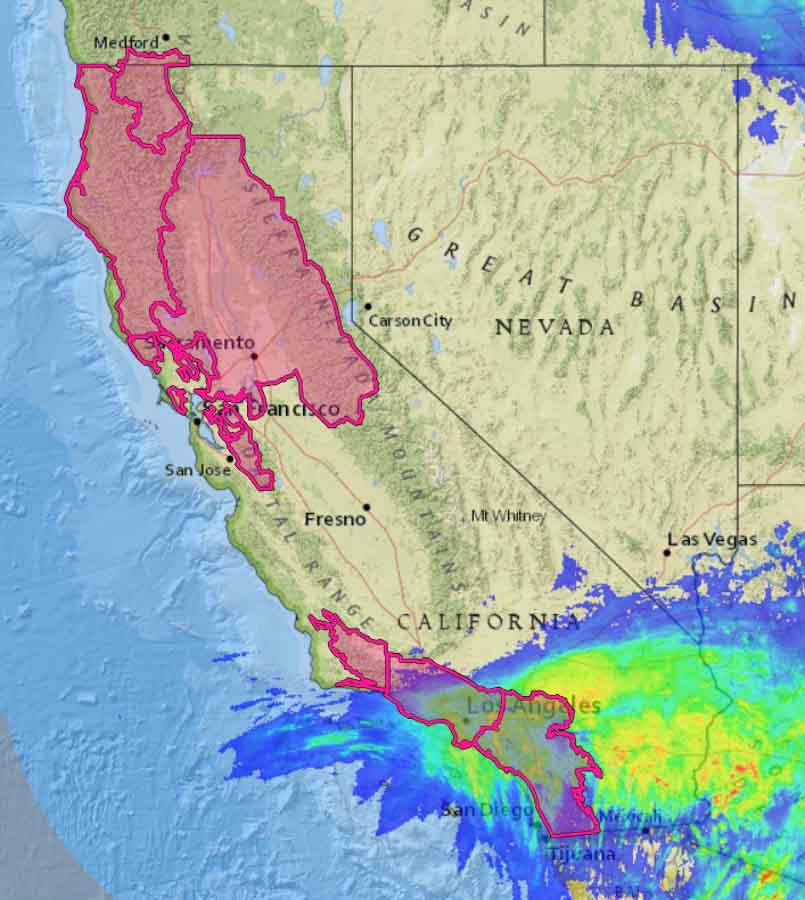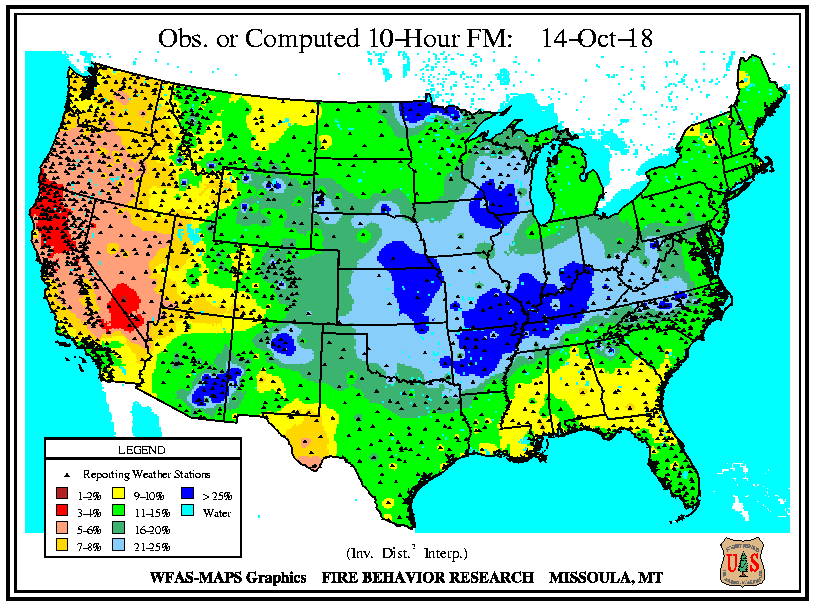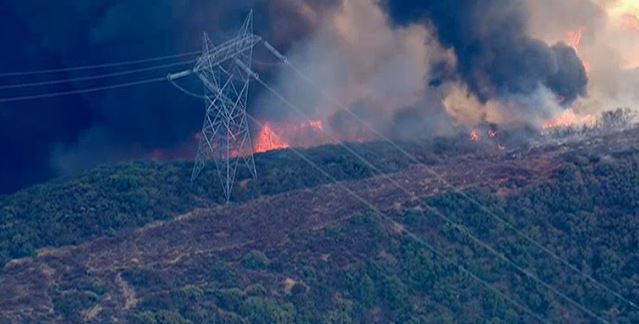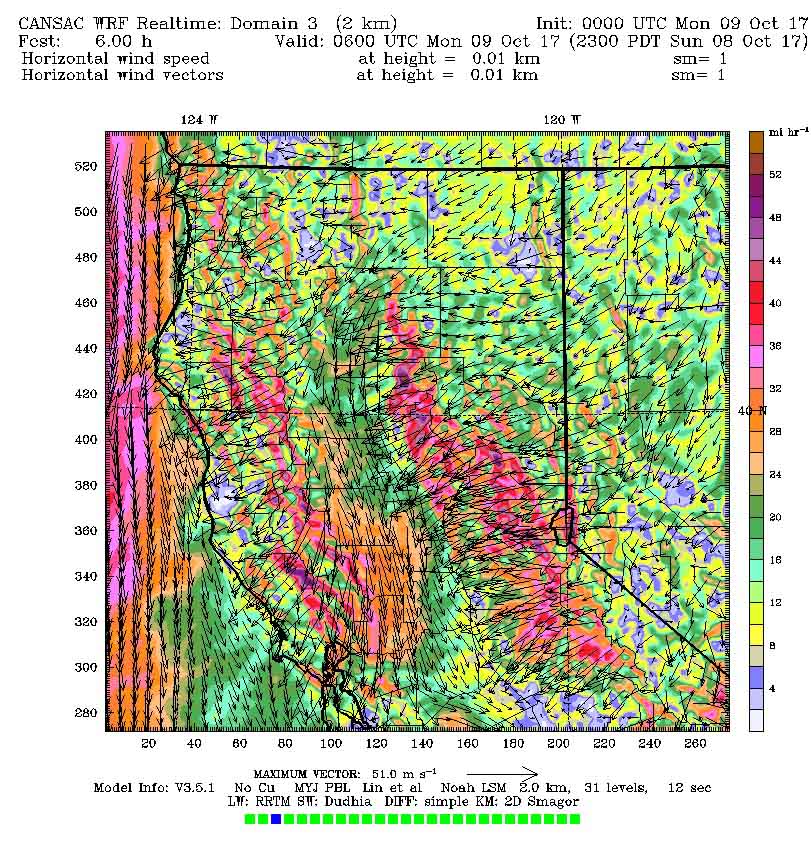Above: A firefighter works a blaze in Northern California during the fires in Wine Country in October, 2017. Photo courtesy CAL FIRE.
A San Francisco-based utility provider that has come under scrutiny in the aftermath of 2017’s California wildfires on Friday outlined a series of steps it says will reduce future fire risks — including preemptively cutting the power in areas facing high fire danger.
Pacific Gas and Electric Company is drafting guidelines to boost wildfire prevention, create new safety measures and harden the electric grid across many of the same areas devastated last year, the company said. PG&E provides utilities to a major swath of California, including Wine Country, which was ravaged by deadly fires in October.
Perhaps the most controversial proposal, a move toward preemptive power shutdowns coincides with conversations elsewhere in the state and across the country. Officials said they were refining protocols for shutting down power lines in “areas where extreme fire conditions are occurring.” They also vowed to implement “appropriate communications and resources to help inform, prepare and support” customers and communities.
The move is not without precedent or controversy.
San Diego Gas and Electric has cut power during red flag warnings and critical fire situations, hoping to prevent a utility-sparked blaze. The policy change came on the heels of the firestorm in 2007 that investigators blamed on power lines. In December, the San Diego company cut power in some rural areas of the county, again triggering debate about fire prevention at the cost of isolating power-dependent swaths of the population who rely on electricity for communication, disaster preparation and even medical care.
Pat Hogan, PG&E senior vice president of electric operations, said the options were not ideal but remained necessary.
Per the Sacramento Bee newspaper:
“We really view this as a last resort,” Hogan said. “It’s one public safety risk vs. another. We’re very cognizant that when we shut off the power, that creates a whole set of safety risks. You potentially impact hospitals, fire stations, police stations, traffic lights go out, garages don’t open.”
However, Hogan said “there are going to be times where the conditions on the ground are so extreme, that the potential for ignition, and the potential for spread if there was an ignition, is so high that we’re going to de-energize those lines.”
The utility, facing multiple investigations and the subject of multiple lawsuits and liability claims since October, also said it is planned to expand its weather forecasting ability by ramping up a network of company-owned weather stations.
The move is also similar to that of SDG&E that we reported on last year.
Those tools will help inform an expanded staff of fire-focused personnel at a to-be created Wildfire Safety Operations Center that will monitor wildfire risks in real-time and coordinate prevention and response efforts with first responders, the company said.
Officials also said they would harden the electrical system by replacing wood utility poles with less-vulnerable ones and pre-treat infrastructure with fire retardant in high-risk areas.
PG&E officials said they are working with regional first responders and fire officials as the utility explores its next steps with the multi-pronged approach. The decisions are not in response to any legal trouble, officials maintained, but rather to address the ever-intensifying risks of climate change and “extreme weather events.”
“Our system and our mindset need to be laser-focused on working together to help prevent devastating wildfires like the ones in the North Bay in October and in Southern California in December from happening again, and in responding quickly and effectively if they do,” Hogan said in a news release. “Extraordinary times call for extraordinary measures, which is what the Community Wildfire Safety Program is all about.”
 Following reports that at least 12 of the wildfires that devastated areas of the California wine country last year were caused by Pacific Gas & Electric power lines, the company has decided to initiate helicopter patrols. The aircraft will inspect lines in El Dorado County in the areas of Camino, Cedar Grove, Pollock Pines, Sly Park, Newtown, Old Fort Jim, Sierra Springs, Pleasant Valley, Sweeneys Crossing and Happy Valley through October 28.
Following reports that at least 12 of the wildfires that devastated areas of the California wine country last year were caused by Pacific Gas & Electric power lines, the company has decided to initiate helicopter patrols. The aircraft will inspect lines in El Dorado County in the areas of Camino, Cedar Grove, Pollock Pines, Sly Park, Newtown, Old Fort Jim, Sierra Springs, Pleasant Valley, Sweeneys Crossing and Happy Valley through October 28.


